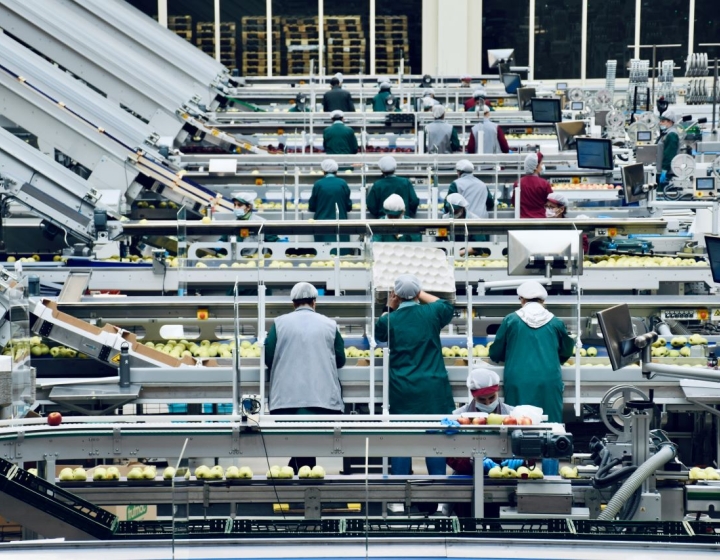Hollopeter lab finds off- and on-switches for endocytosis
Glad to be alive? Thank endocytosis, the process that enables cells to absorb macromolecules. Despite its indispensable nature, scientists aren’t exactly sure how the machinery underpinning endocytosis works. Using the model organism C. elegans –tiny, 1mm-long worms, Gunther Hollopeter, assistant professor of molecular medicine at the College of Veterinary medicine, has published a series of recent papers in the journal eLIFE that reveal new insights into this process.
Understanding endocytosis better has deep medical impact; high cholesterol, Alzheimer’s disease, and certain cancers all connect to dysfunction in macromolecule absorption. “Either enhancing or blocking endocytosis has a lot of medical implications,” says Hollopeter. “We study the protein complex that lies at the very heart of this process.”
AP2: The gatekeeper protein
In endocytosis, cells engulf external molecules with their own plasma membrane. These engulfing membrane pouches are coated with a scaffold-like protein called clathrin. However, clathrin requires a protein complex known as AP2 to connect the cell membrane and its cargo. How exactly AP2 is regulated was a mystery, however, until the Hollopeter lab began to investigate, turning to mutant worms for some answers.
FCHo: The on-switch
The Hollopeter team examined a protein known as FCHo, creating mutant C. elegans that lacked this molecule. These mutants had issues; their AP2 gatekeepers existed only in a closed, inactive state that prevented any communing with the clathrin-cargo packages from the outside world. When researchers gave them doses of FCHo proteins, their AP2 complexes were once again able to open. From these and other genetic screening studies, Hollopeter and his team determined that FCHo acts as the on-switch for AP2, causing it to open up and orchestrate endocytosis. “It is an open question how endocytosis is regulated in various tissues of other animals, but our work suggests that the FCHo family of proteins is likely to be important for activating the core machinery in many systems,” says Hollopeter.
NECAPs: The off-switch
This finding led the research team to their next question—what turns AP2 off? In a genetic screen, the Hollopeter lab found that loss of a protein called NECAP restored the open state of AP2 in worms lacking FCHo. Therefore they suspected that NECAP might normally be acting as a ‘brake’ on AP2—and its removal enabled AP2 to stay active--even without the ‘gas pedal’ action of FCHo.
Graduate students Gwendolyn Beacham and Edward Partlow set out to investigate this theory further. Indeed, they found that AP2 complexes were permanently turned on in worms lacking NECAP but an injected dose of NECAP proteins ‘rescued’ the mutants, allowing them to deactivate their AP2 complexes. The researchers also proved that NECAP proteins are vital across the animal kingdom by giving NECAPs from other organisms—including vertebrates—to mutant worms lacking them in a kind of cross-species protein transfer. These foreign NECAPS still did the job, successfully turning off the worms’ AP2 complexes. Gwendolyn Beacham, the first author of their most recent study, then went on to show that NECAP selectively binds to AP2 when it’s in an open state.
All of these studies helped the Hollopeter lab demonstrate NECAP’s role in endocytosis—acting as the off-switch, NECAPs may allow AP2 to leave the membrane and recycle back into the cytosol. This could recycle the complex and enable it to return to the membrane for another round of endocytosis, continuing this vital cellular process for the entire organism. “To maintain homeostasis, you don’t want to AP2 to get stuck in an inactive or active state,” Hollopeter explains. “Endocytosis has to have that act of constant recycling.”
More to discover
With this discovery comes more questions. Specifically, how did the mutant worms survive without NECAP proteins around to keep the endocytosis cycle going? Hollopeter and his team suspect this system has several failsafes. Their next step in studying the system will be to visualize the NECAP protein and to pinpoint its exact mechanism of action. To do this, they are pursuing a collaboration with Assistant Professor Joshua Chappie, an expert in protein crystallography whose lab happens to be right next door. The Hollopeter lab has also recently isolated worms that look similar to FCHo knockouts, but have mutations in protein that’s connected to kidney disease. The team plans to characterize these new mutant worms further, with the hope they will help reveal more insights endocytosis.
Ultimately, by understanding the minute details of endocytosis, researchers can potentially develop drugs that could tweak how cells take in external molecules. For example, heart disease, Alzheimer’s, and some cancers are associated with the dysfunctional uptake of certain molecules that then cause dangerous conditions. “Through a careful toggling of these cellular on- and off-switches, we may find a way to block these diseases at the cellular level,” Hollopeter says.
-By Lauren Cahoon Roberts
Related publications:
NECAPs are negative regulators of the AP2 clathrin adaptor complex






